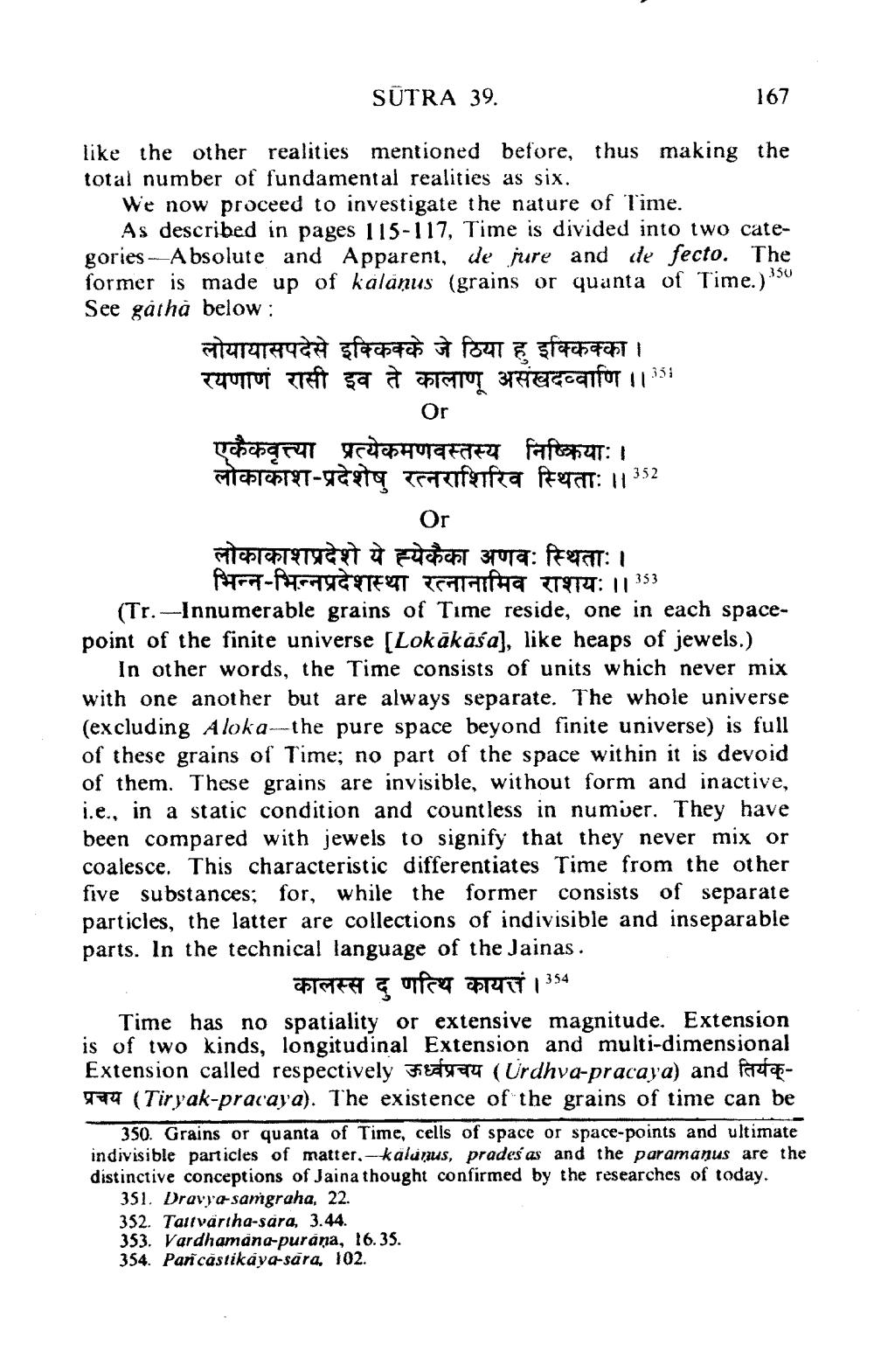________________
SUTRA 39.
167
like the other realities mentioned before, thus making the total number of fundamental realities as six.
We now proceed to investigate the nature of Time.
As described in pages 115-117, Time is divided into two categories --Absolute and Apparent, de jure and defecto. The former is made up of kalanus (grains or quanta of Time.).' See gathì below:
लोयायासपदेसे इक्किक्के जे ठिया हु इक्किक्का। रयणाणं रासी इव ते कालाण असंखदव्वाणि ।। 35
Or एकैकवृत्त्या प्रत्येकमणवस्तस्य निष्क्रियाः ।
tabTOATET-UTSTq Fragtfra Peta: 11352
लोकाकाशप्रदेशे ये ह्येकैका अणवः स्थिताः ।
frd-PH-HVCTCT (CHIHIH4 ATTI: || 353 (Tr.-Innumerable grains of Time reside, one in each spacepoint of the finite universe (Lokākāśa], like heaps of jewels.)
In other words, the Time consists of units which never mix with one another but are always separate. The whole universe (excluding Aloka- the pure space beyond finite universe) is full of these grains of Time; no part of the space within it is devoid of them. These grains are invisible, without form and inactive,
in a static condition and countless in number. They have been compared with jewels to signify that they never mix or coalesce. This characteristic differentiates Time from the other five substances; for, while the former consists of separate particles, the latter are collections of indivisible and inseparable parts. In the technical language of the Jainas.
FATEH T o PTT 1354 Time has no spatiality or extensive magnitude. Extension is of two kinds, longitudinal Extension and multi-dimensional Extension called respectively Featu (Urdhva-pracaya) and fartas
(Tir yak-pracaya). The existence of the grains of time can be
350. Grains or quanta of Time, cells of space or space-points and ultimate indivisible particles of matter.-kalamus, prades as and the paramanus are the distinctive conceptions of Jaina thought confirmed by the researches of today.
351. Dravya-samgraha, 22. 352. Tallvarıha-sara, 3.44. 353. Vardhamana-purana, 16.35. 354. Pari castikaya-sara, 102.




